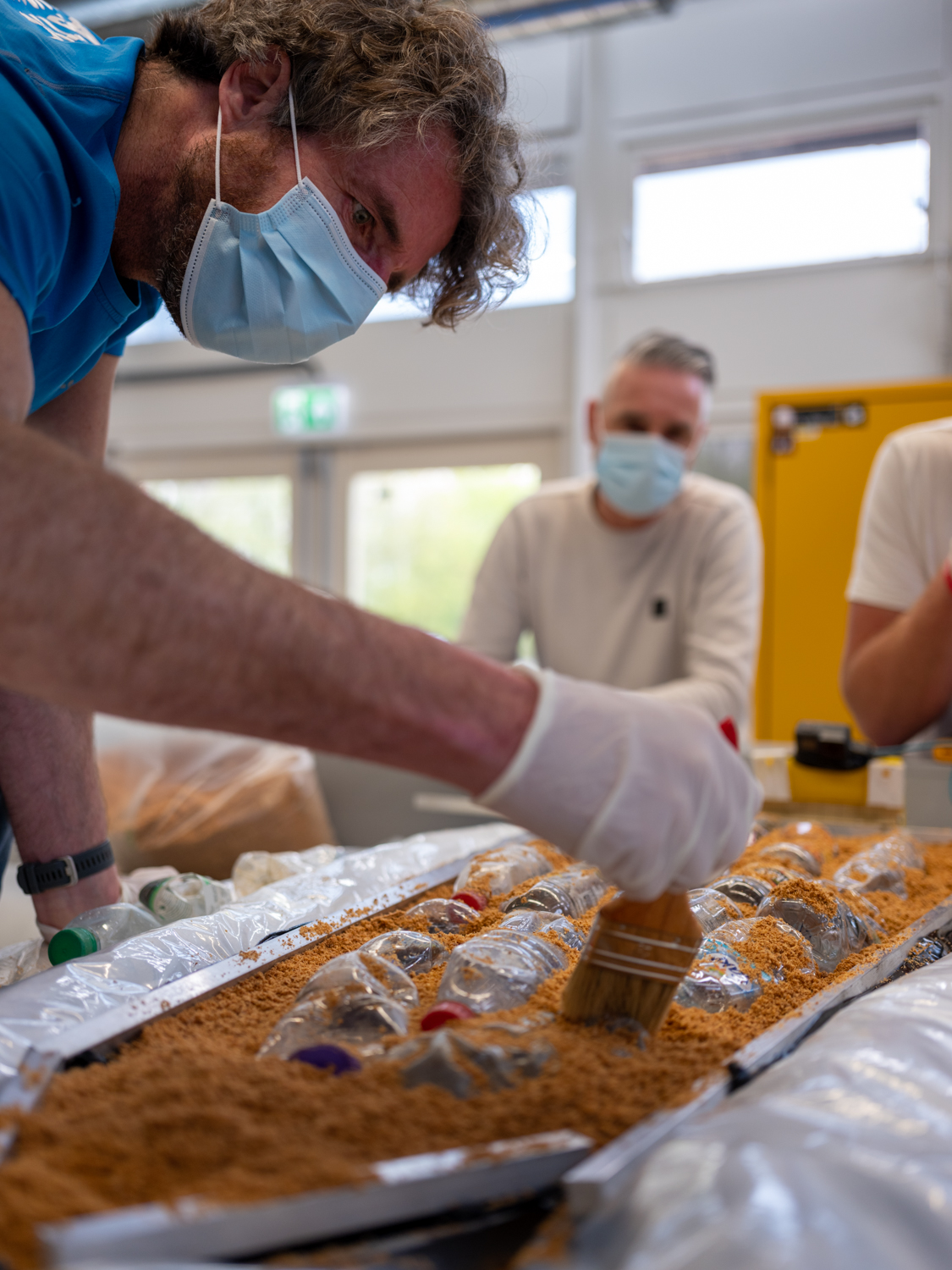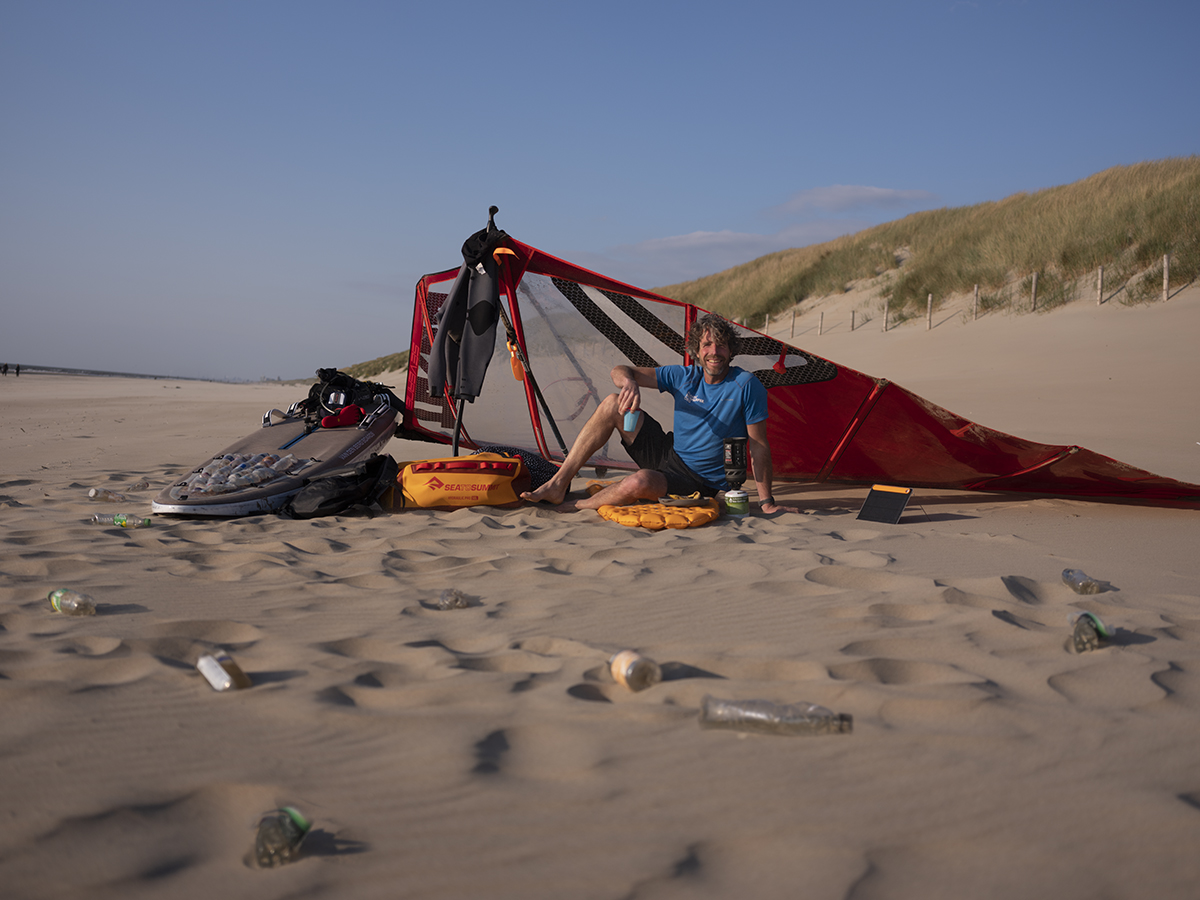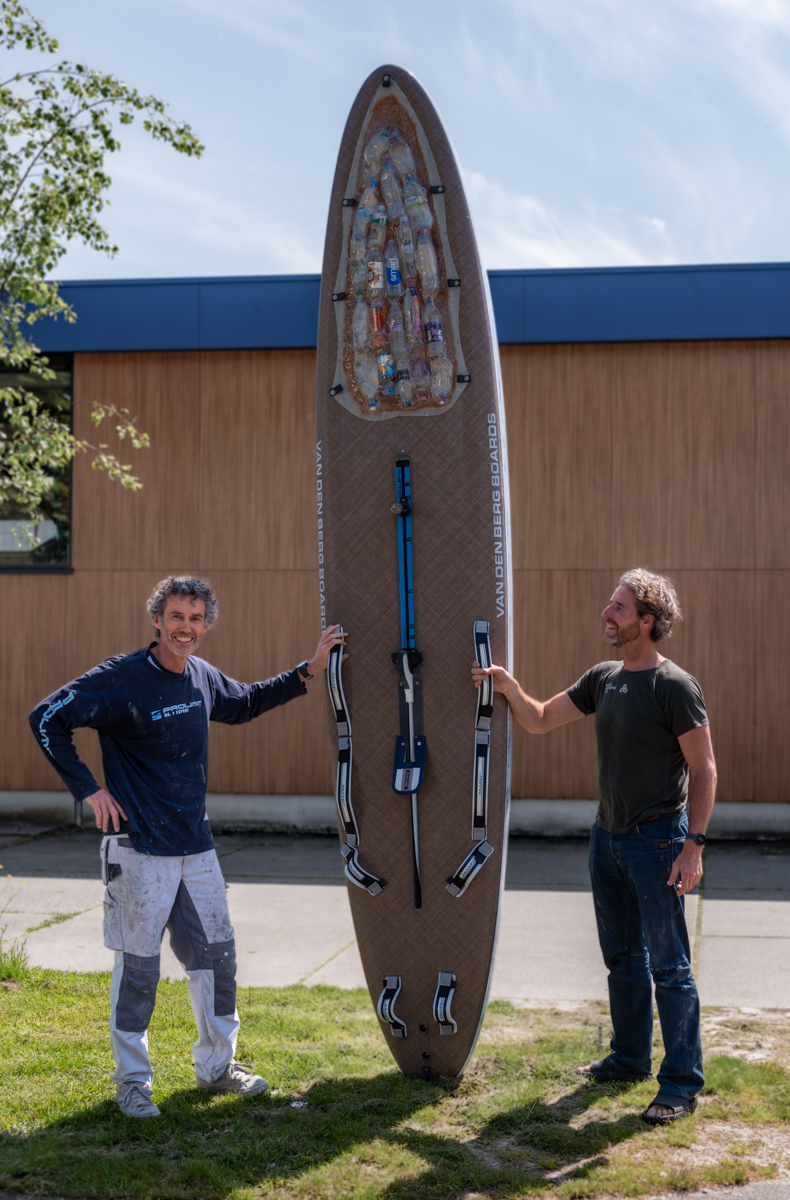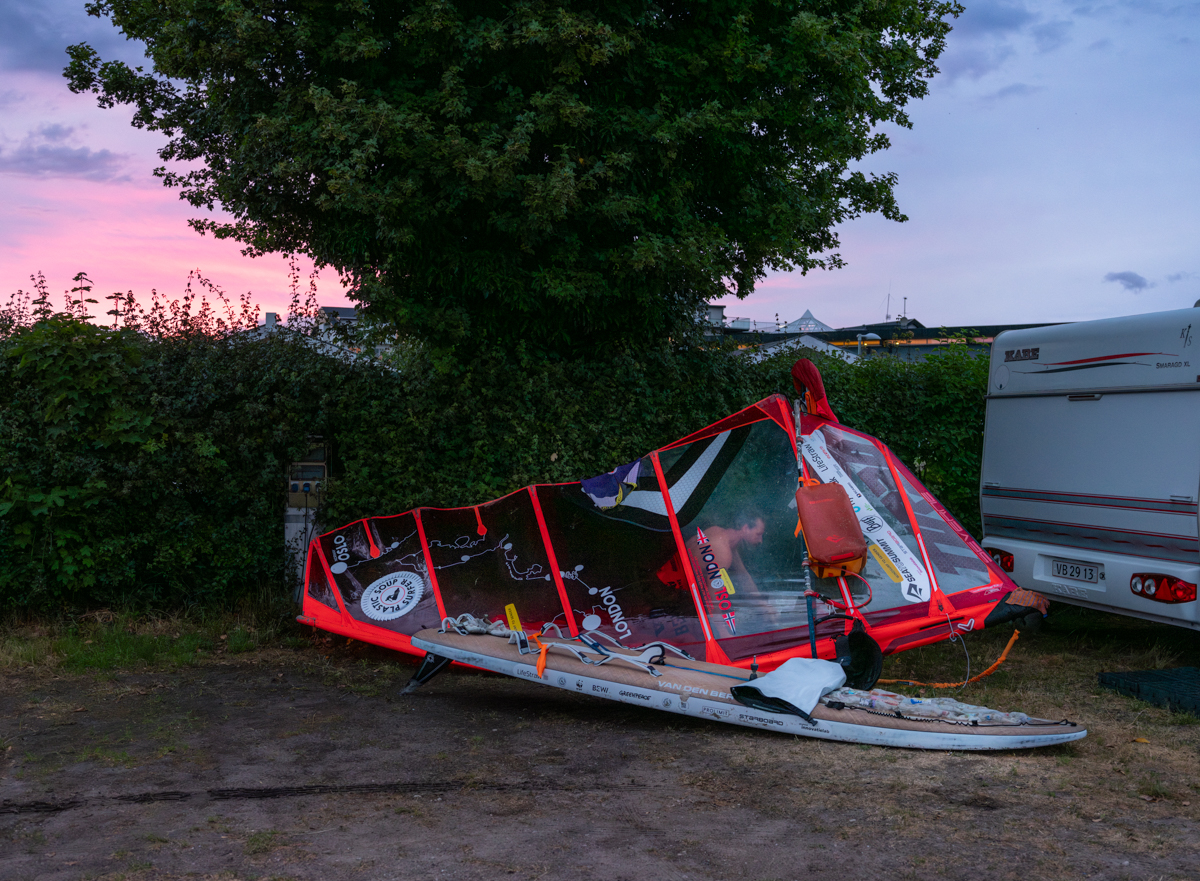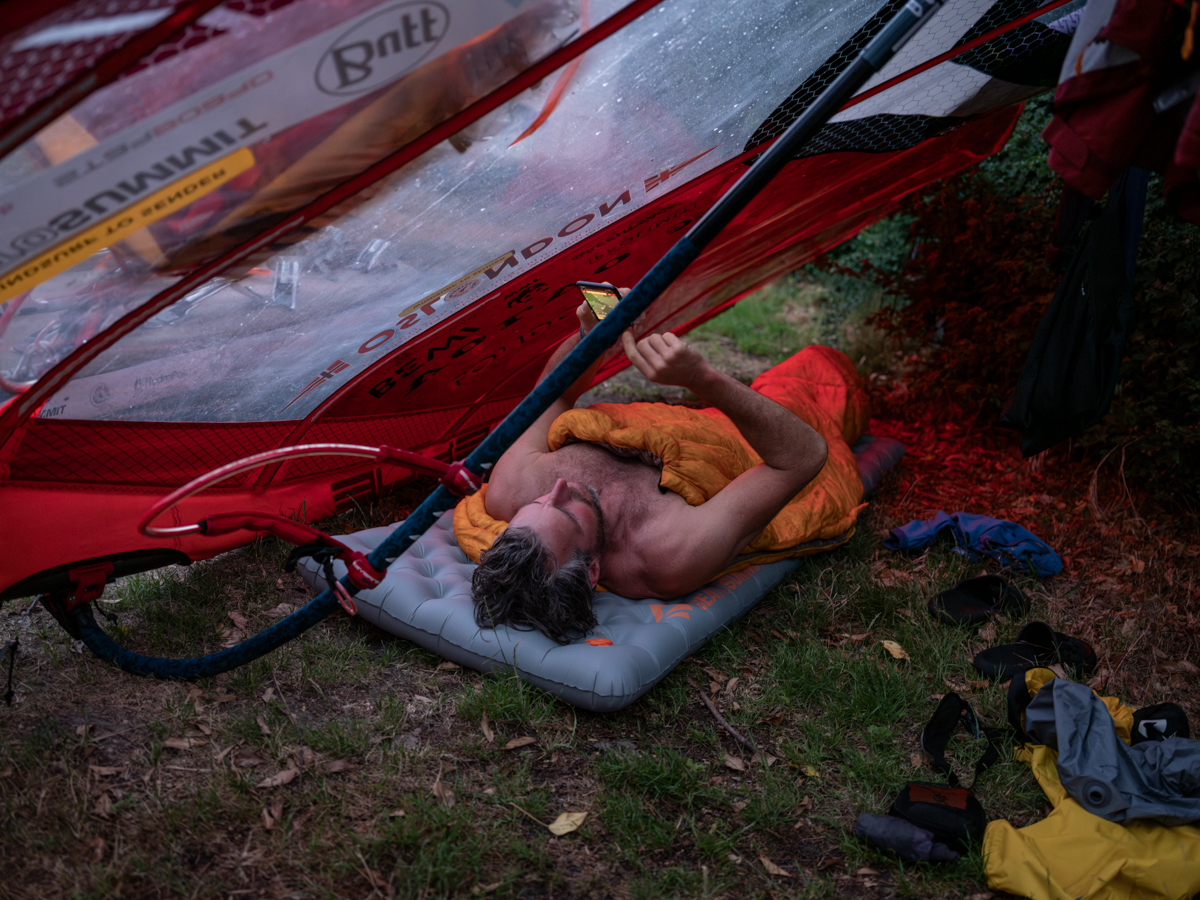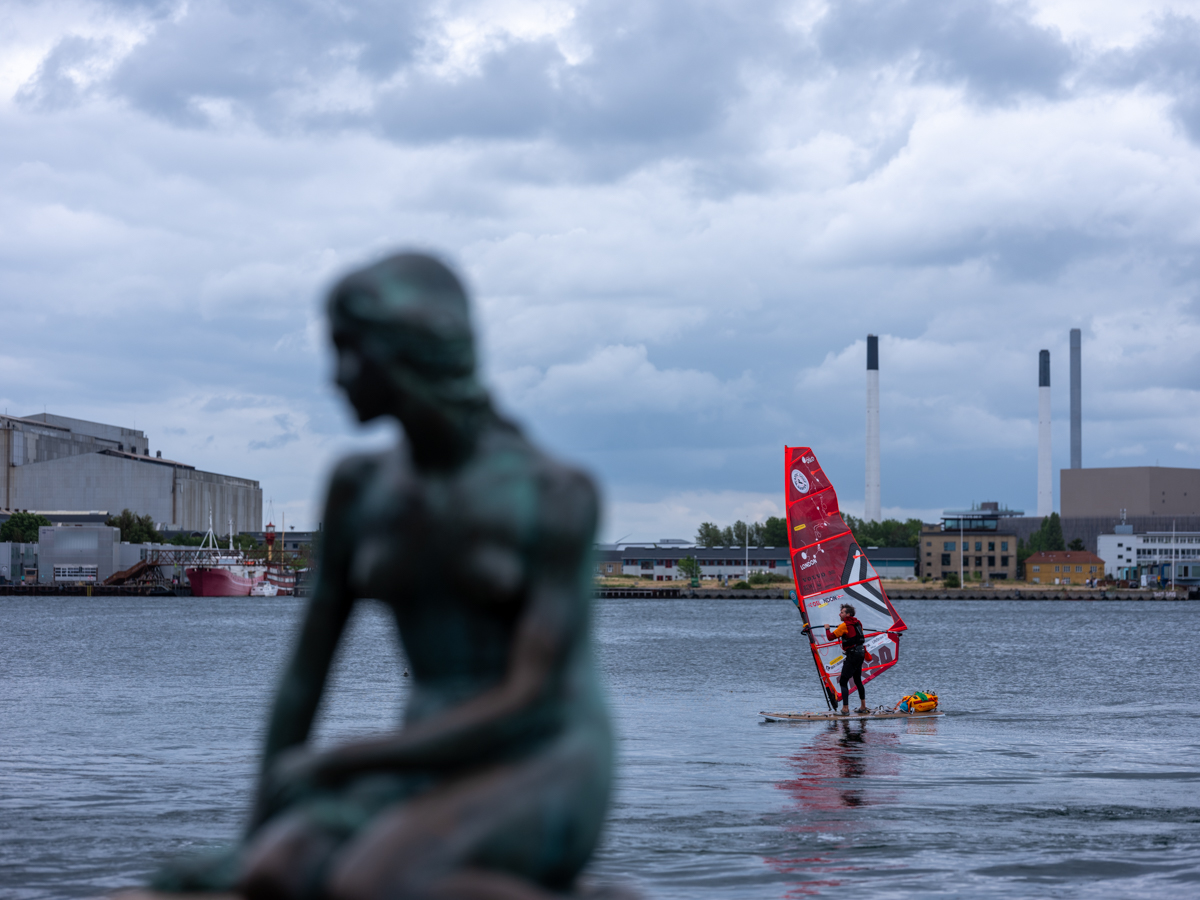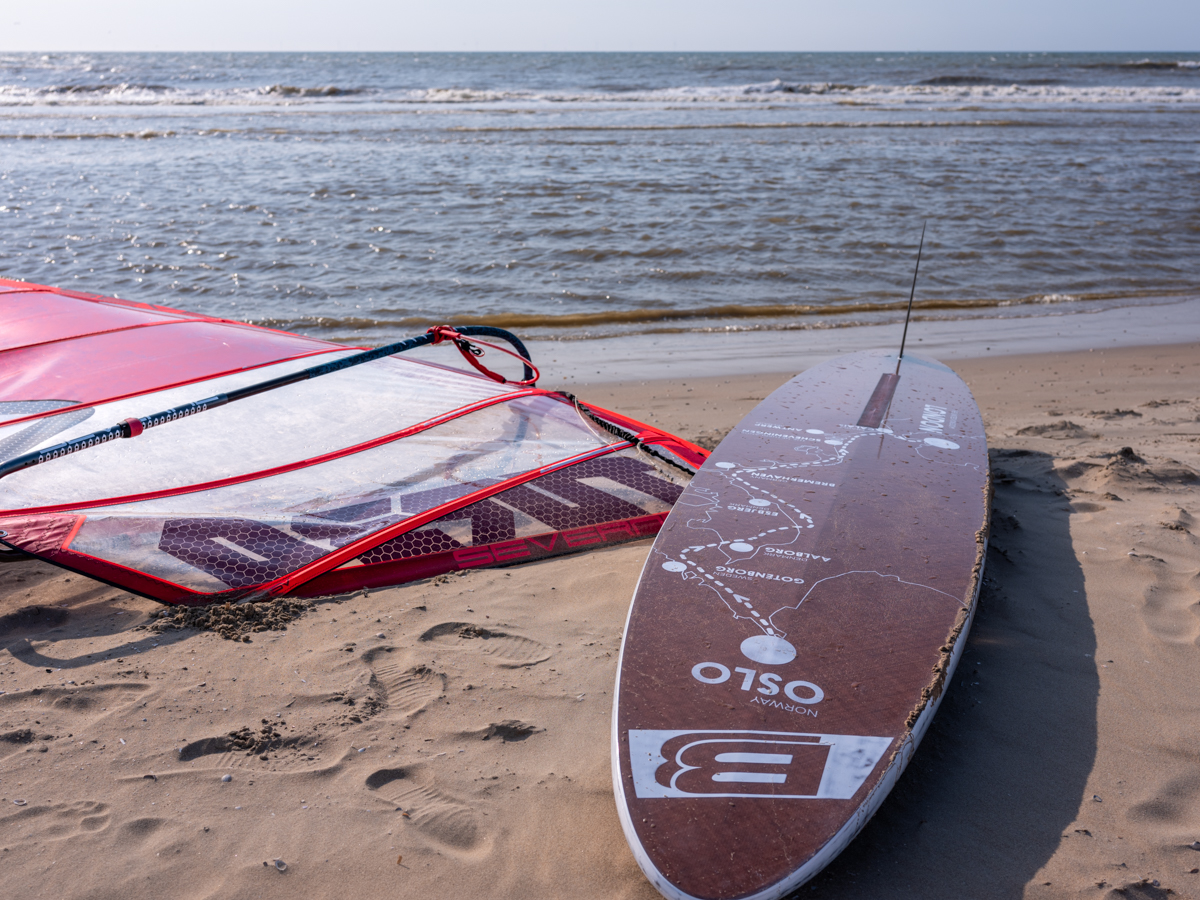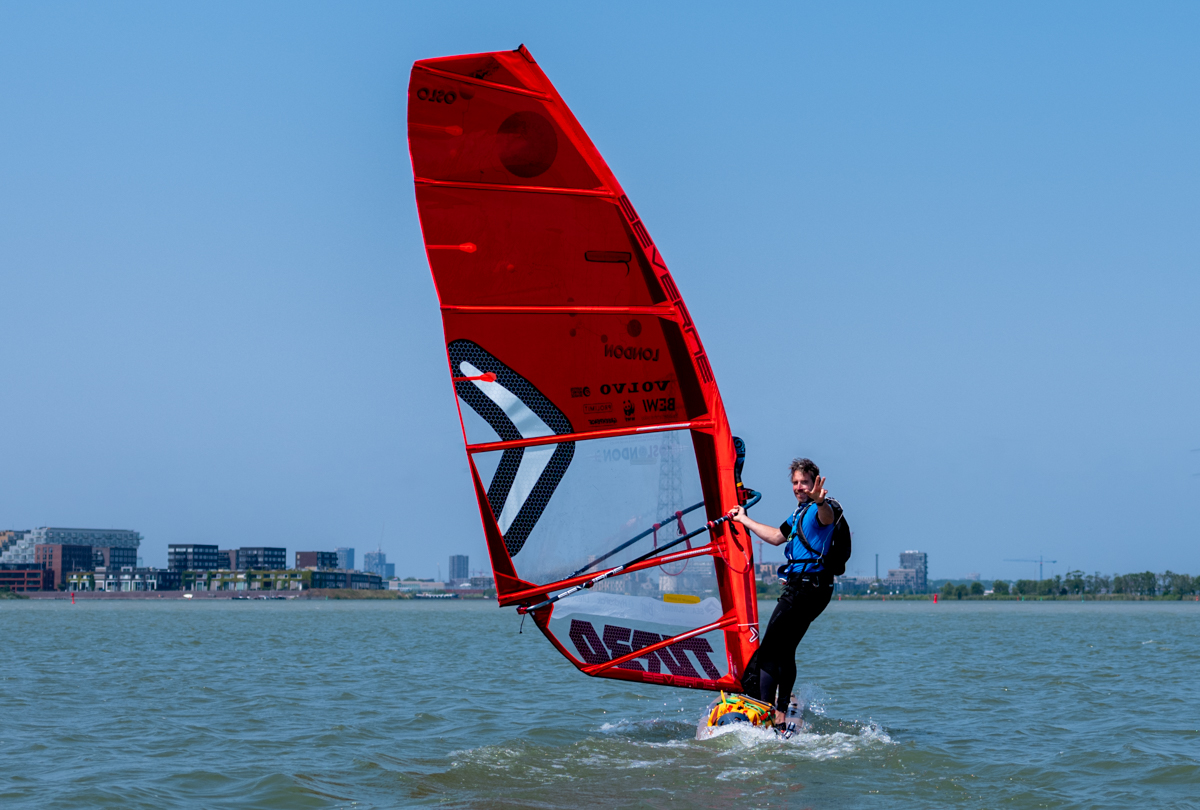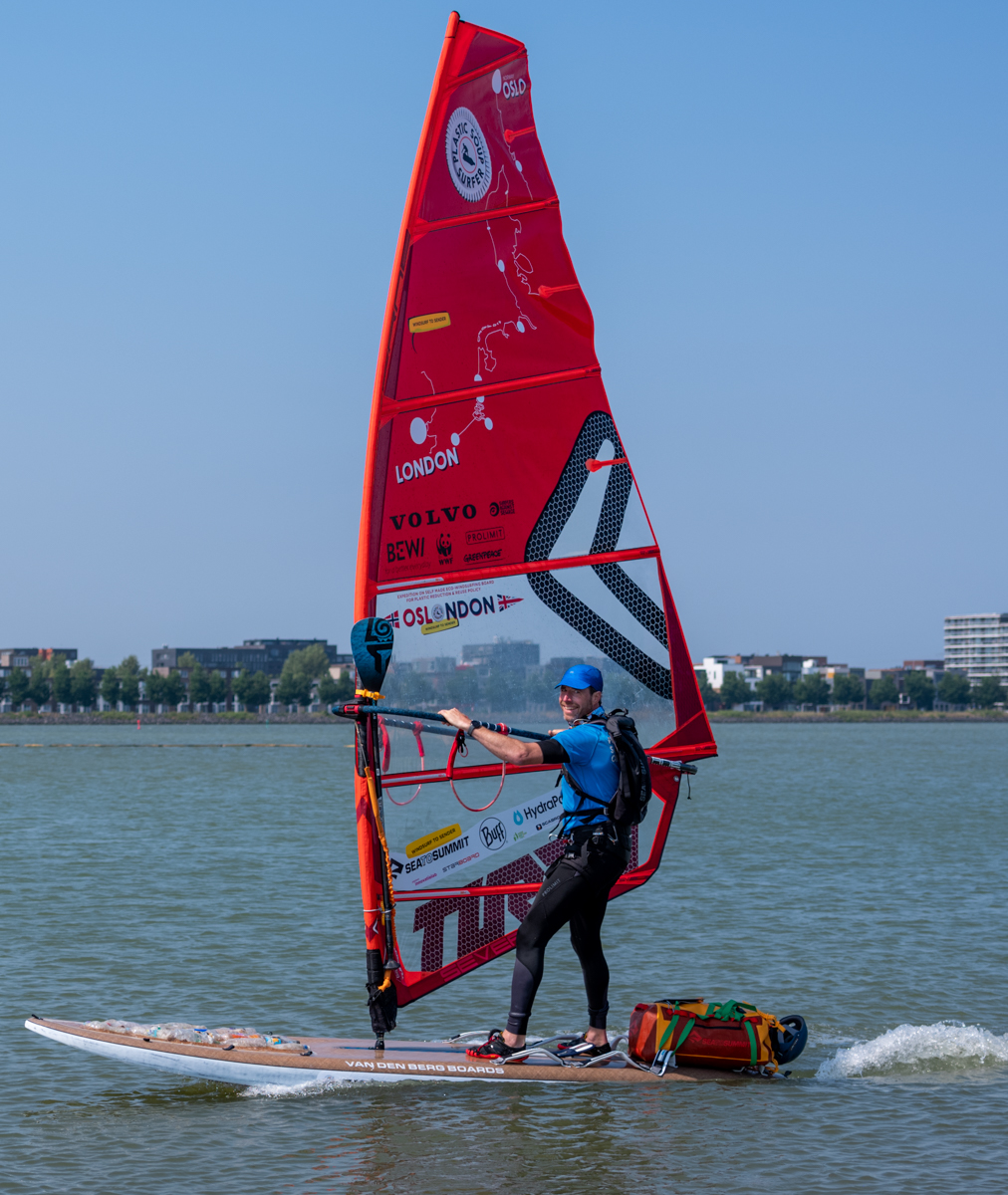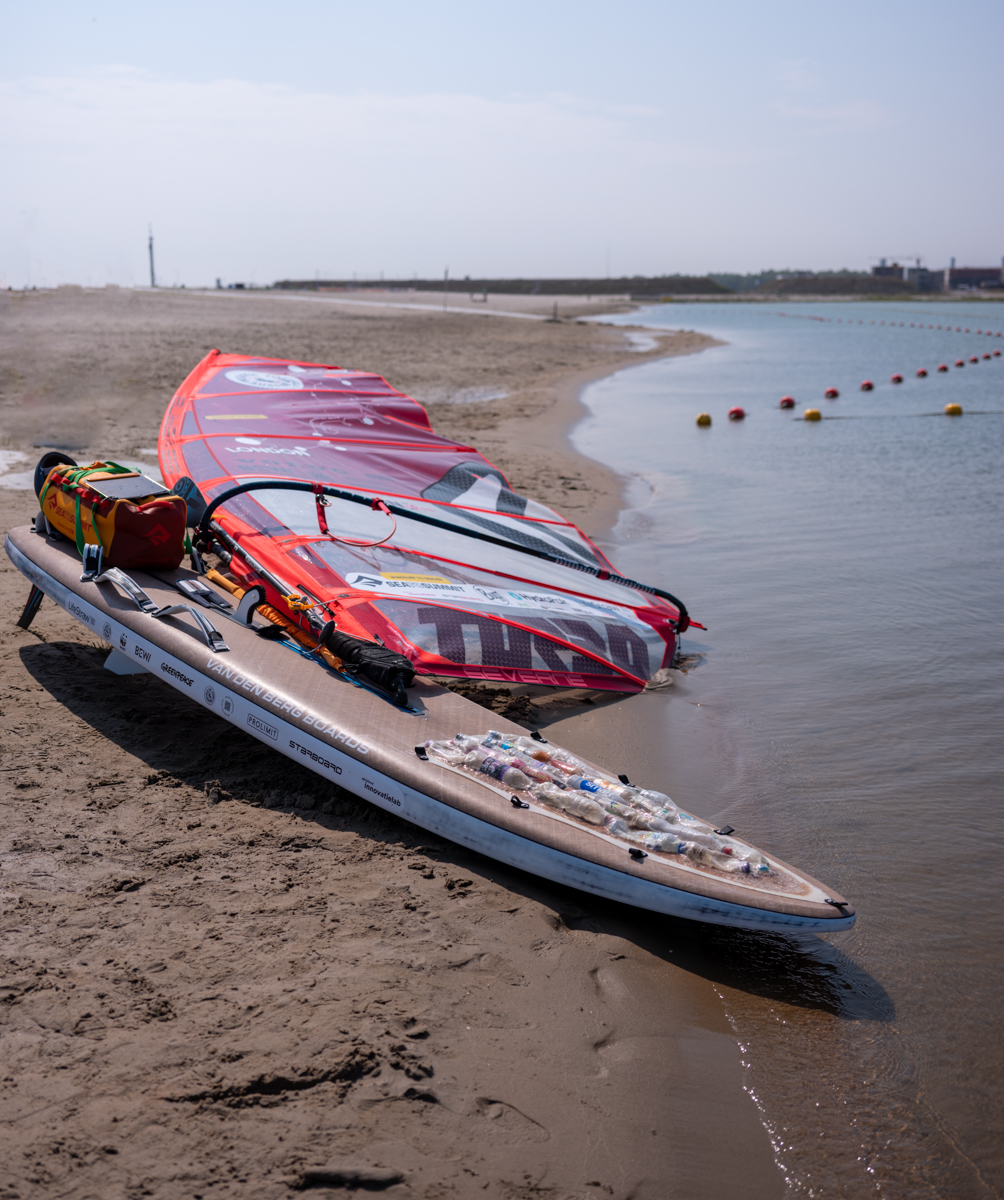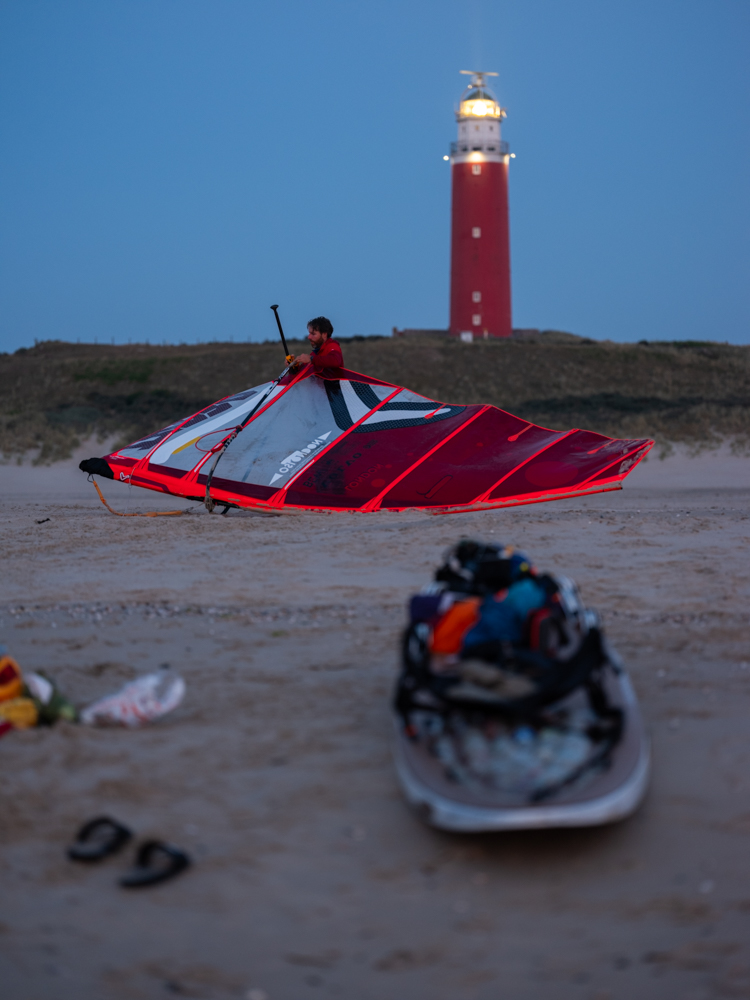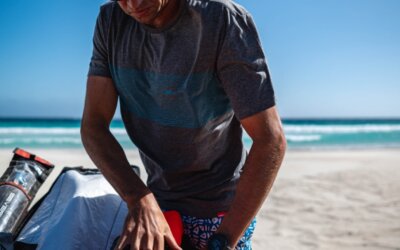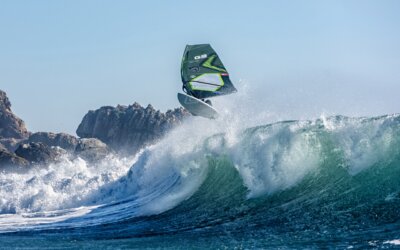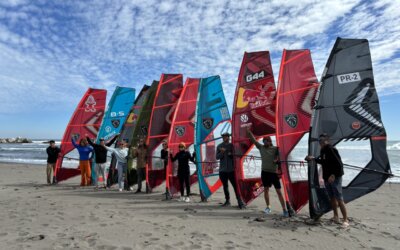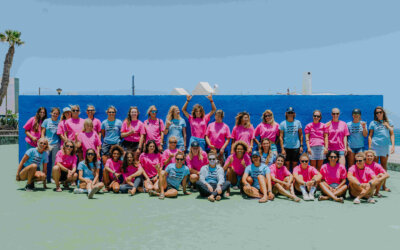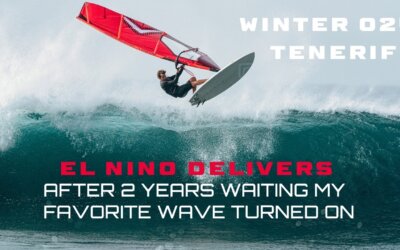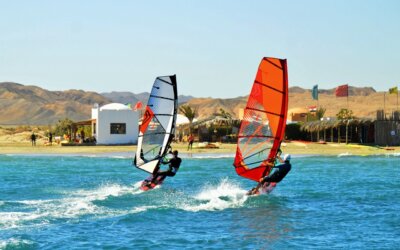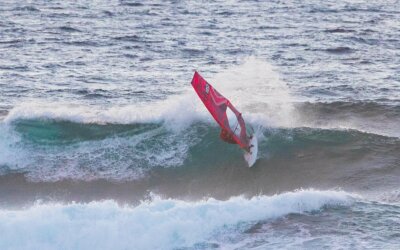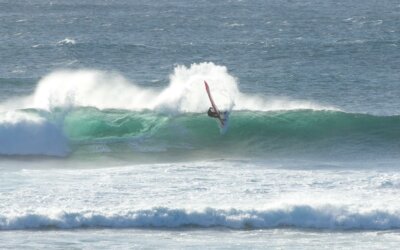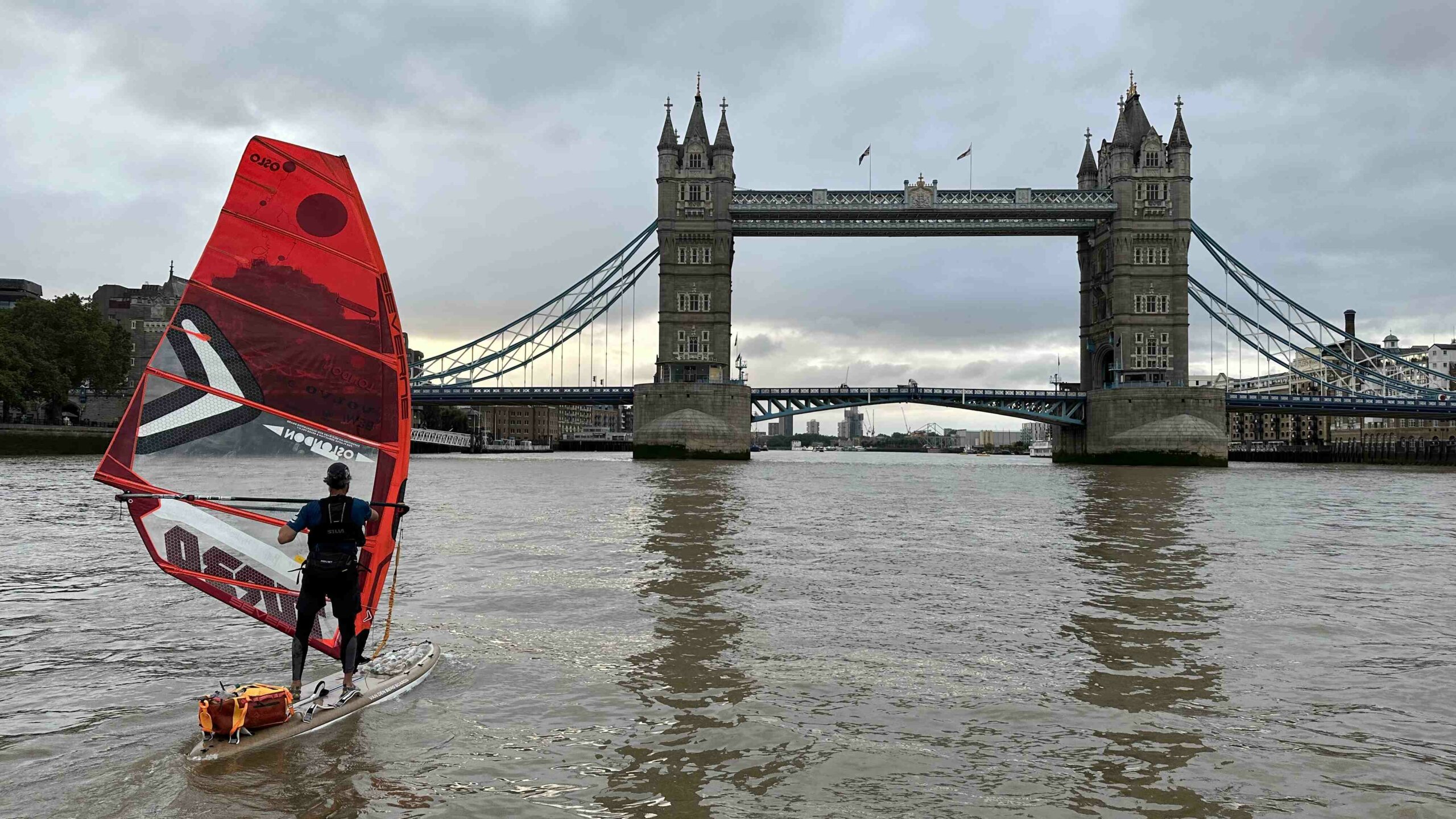
Image: Esther Leystra
Plastic Soup Surfer: Windsurfing from Oslo to London to Battle Plastic Waste in the North Sea
Merijn Tinga, a Dutch environmental activist, windsurfed from Oslo to London to raise awareness of the enormous amount of plastic trash floating in the North Sea.
Tinga’s mission is to persuade Britain to move forward with the introduction of a deposit system for plastic bottles.
Merijn, also known as “The Plastic Soup Surfer,” used a Severne Turbo and a recycled-plastic board to windsurf 1800 kilometers in 30 days.
Merijn’s journey is mind-blowing. We had to know more and got him on the phone for a detailed talk about this epic adventure.
WHY DID YOU CHOOSE OSLO – LONDON AS YOUR ROUTE?
¨Well, I decided to go from Oslo to London because seven years ago I found plastic bottles from the Netherlands and England on the west coast of Sweden while picking up plastic on the beach there. I was cleaning up plastic every day, and when I found those bottles, it became the trigger for my commitment to get a deposit arranged on small bottles in the Netherlands. I did this through a surf petition, which eventually became a political motion-
There were two reasons for this trip. First, that English plastic bottle stuck in my mind, and I felt something had to be done about it. Second, the area there is simply beautiful for sailing and surfing. Because of my spirit of adventure, I wanted to experience that stretch again, but on a windsurf board. Normally, you would go from London to Oslo because of the southwest winds and currents. But my mission required me to sail precisely against the wind and current¨
YOU CHOSE WINDSURFING FOR A REASON. WHAT WAS THE REASON?
¨My father was a tropical doctor, so we lived in Curaçao when I was younger. I remember very well that when I was 8 years old, early in the morning with my school clothes on, before we went to school, I already went to the Spanish water surf spot, to surf.
I also learned to kite and I can wingfoil a bit. But in the end, windsurfing is really my favorite water sport, the coolest thing there is. Last weekend, there was good wind, even after my month on the water, I still had a bit of sailing at sea and on the local lake near where I live!¨
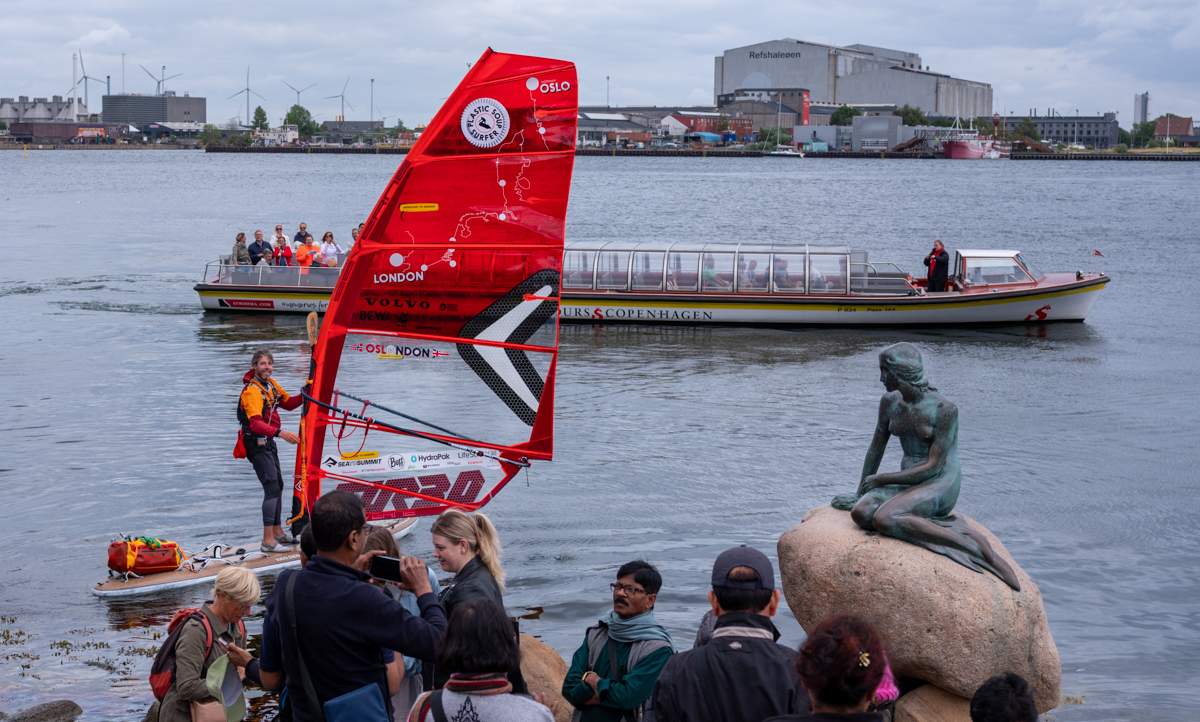
Image: Marjolein Vinkenoog
HOW DID YOU PHYSICALLY PREPARE FOR THIS CHALLENGE? WAS IT MAINLY STRENGTH TRAINING?
¨No, that’s much more about endurance training and the main thing is to ‘hang on’ to that boom. I swam a lot, mainly to increase my overall strength, in a nearby lake where I swim daily. And whenever it was blowing hard, I would get on my longboard, a race board. That’s how I started preparing for the trip I eventually made. So it’s really about putting in hours on the water itself, which was essential.
Maybe in hindsight, I could have trained more. In the first week, my hands did still bother me, mainly because I was hanging on the boom for so long, you could feel that. But after a week that feeling disappeared and I really got stronger during the trip. You notice that you build up toughness. It’s not so much about building big muscles. Yes, you build muscle, but it doesn’t get very bulky¨
HOW MANY PEOPLE DID YOU PARTNER UP WITH TO ENSURE YOUR SAFETY DURING THE TRIP?
¨We built a windsurf board with Ron van den Berg, the world-famous shaper. We wanted to make it from recycled and organic materials, so we collected plastic bottles from the Thames in London and incorporated them into the board. First, we wanted to build it entirely from mycelium, but that turned out to be too heavy and would cause problems if the board got damaged. In the end, we opted for a different construction.
I was completely on my own during the trip. I was dropped off in Oslo and had to bring my own gear, which was very minimal as I had no tent with me. A team member stayed around for a few days to help me with final preparations, but after that, I was on my own. I went windsurfing as far as Calais or Dunkirk, where I wanted to cross. Later, Tim joined me again to continue the trip to London together
The charming thing about such an expedition is that you are completely focused on what you are doing. Everything revolves around the wind, currents, your own body, sleeping, and eating. You have no set appointments and don’t know where you’ll end up at night, so you can fully concentrate on windsurfing and navigation¨
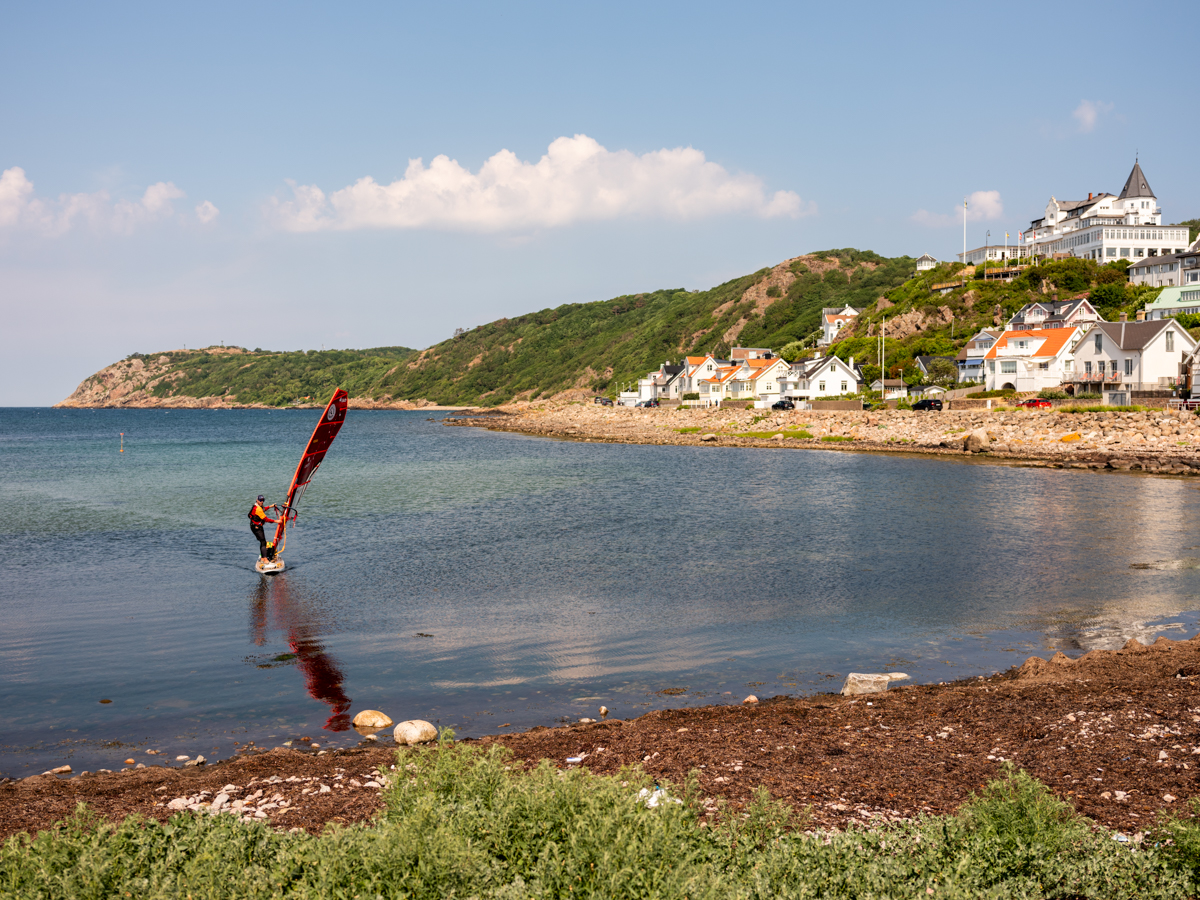
Image: Marjolein Vinkenoog
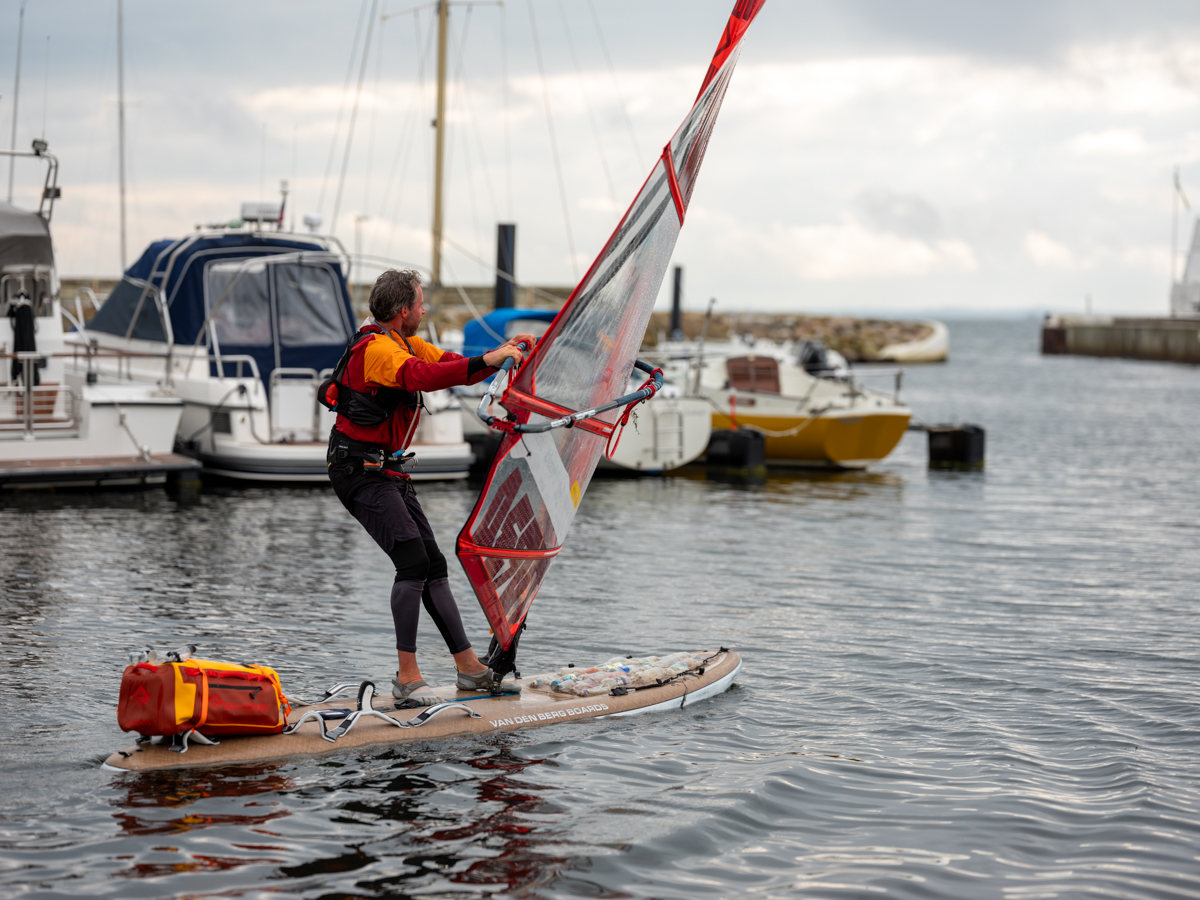
Image: Marjolein Vinkenoog
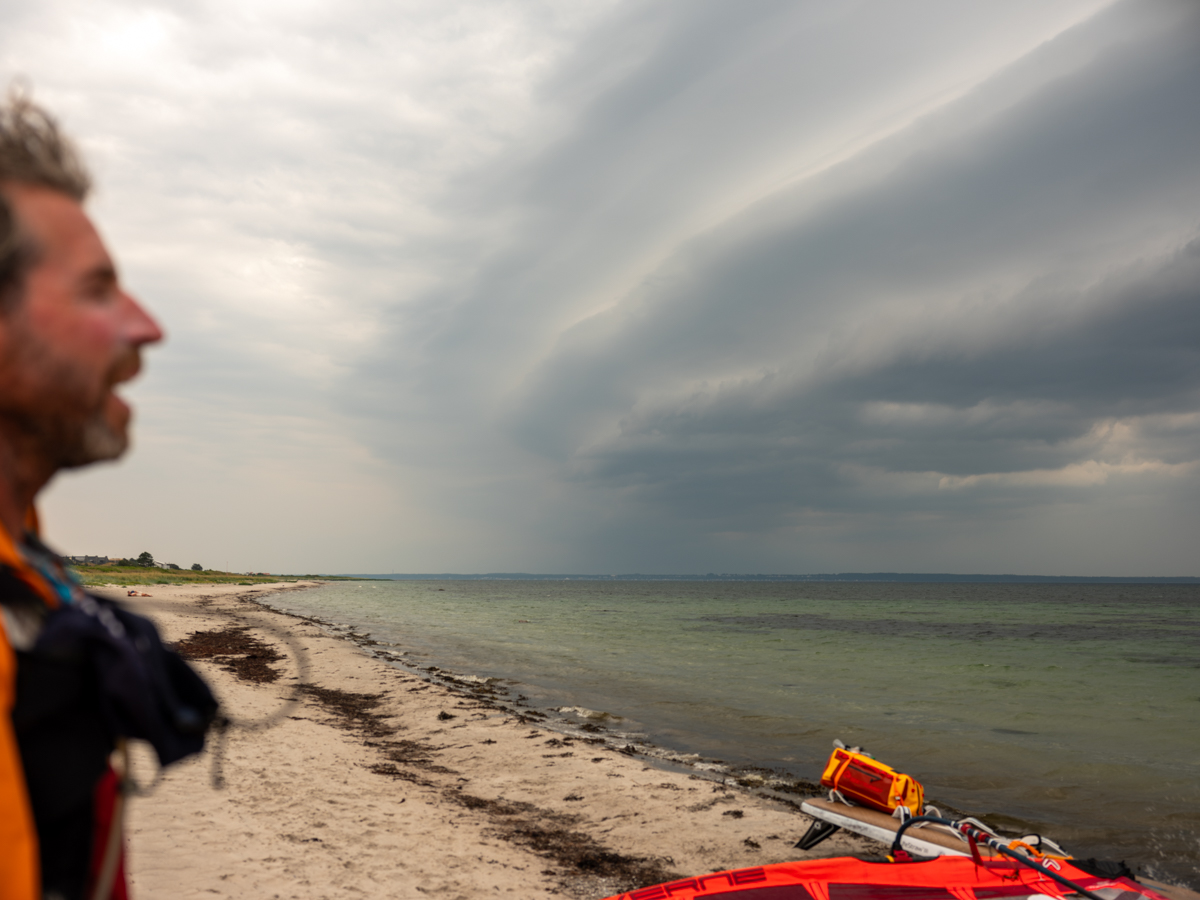
Image: Marjolein Vinkenoog
WHAT WENT THROUGH YOUR MIND RIGHT BEFORE WINDSURFING YOUR FIRST KILOMETRES OF THIS CHALLENGE?
¨A week beforehand, I looked at the weather in Oslo. That felt rather unfair because you are still in a world where everything is at your fingertips. You still can’t quite imagine what it’s like to stand on a windsurf board all day and sleep under your Severne sail at night. The resignation actually came only after I started, a few hours after I started.
In the beginning, I was impatient and wanted to move forward quickly, but after a few days, I started getting into the rhythm. I started really feeling my body and seeing how far I could go. That took time and effort. In the end, I had to make sure I got to London in time for my appointment with the environment minister, so the stress came back. I had planned in advance that I needed to cover 60 km a day to cover the distance. But some days I could only sail 30 km due to lack of wind or misjudging the current, while on other days I could cover 130 km. This could not be predicted in advance as I had to deal with nature. Sometimes we faced total wind chills and I just couldn’t sail¨
YOU MENTION USING YOUR SEVERNE SAIL AS A TENT. CAN YOU ELABORATE ON THIS?
“True, I had no possibility of bringing a tent, as I was trying to carry as little luggage as possible. That meant I brought a set of clothes for the evening, several parts of neoprene clothing, and a windproof jacket that I could also wear at night. Depending on the weather, I made different clothing choices each time.
I slept under my Severne sail, and that worked just as well as a tent, actually even better. At one point, I discovered that if I extended the daggerboard of my board, I created a small shelter. That way I could hide myself and remain invisible when I was under my sail¨
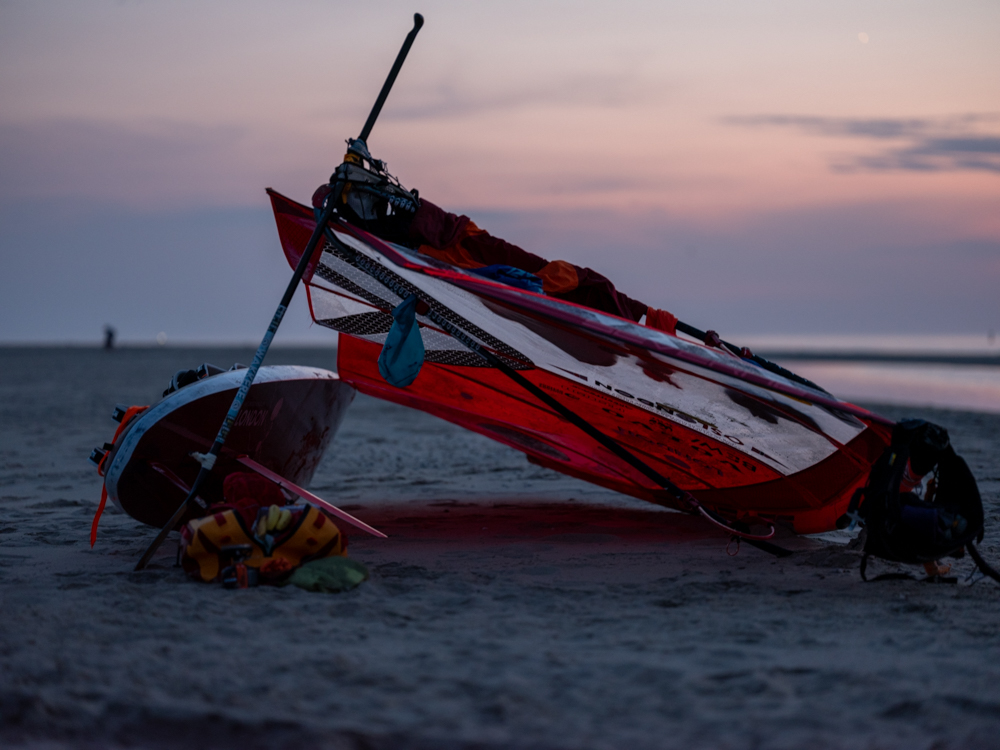
Image: Marjolein Vinkenoog
HOW DO YOU KEEP A POSITIVE MINDSET?
¨Well, actually it comes pretty naturally. At some point, you just get into that focus. Of course, there are days when you really don’t feel like it, because it’s just headwinds and you find it tough. But anyway, then there is the bigger goal and also the support of your environment that makes you get on your board every day. It’s not just about the distance, but therefore also about that bigger goal¨
ROUTINE IS KEY, YET WHEN YOU PASSED THROUGH NOORDWIJK, NETHERLANDS, YOU GOT TO SPEND A NIGHT AT YOUR NEARBY HOME. DID THAT CAUSE ANY DISRUPTIONS?
¨It’s obviously very nice to get home, but it also takes effort to then get back on your board and keep going. With the prospect of headwinds heading south, it was not easy to leave home again.
When you are so close to home, it pulls too much and I just want to be at home and see my family. What you do notice when you are at home is that your routine has to be there and how important it is to carry out that routine almost mindlessly every day. When you take a break from it, you only realize how hard it actually is. But you just keep going.
My daily routine looked like this. You usually arrive around eight in the evening, stop surfing, and around ten you go to sleep. The next morning, you get up at six and get back on your board almost automatically. Everything revolves around the weather, the wind and the current, especially if you are dealing with Dutch coastal currents. You don’t have time to think, you just know you have to move on¨
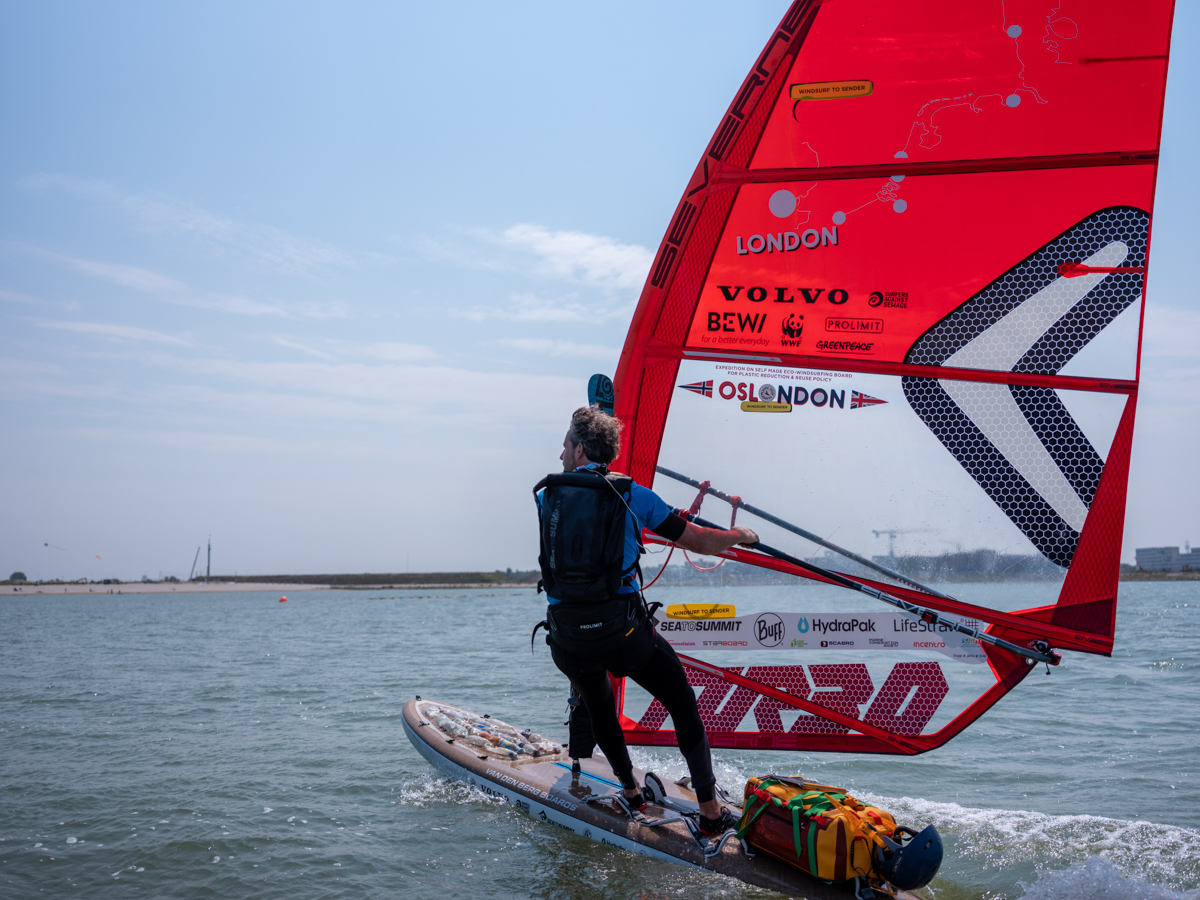
Image: Marjolein Vinkenoog
YOU TALKED A LOT ABOUT THE CURRENTS, IS THAT PERSONAL KNOWLEDGE YOU HAVE ACQUIRED?
¨Yes, I have a lot of sailing experience. I’ve sailed around England and made other longer sailing trips. So I have a lot of sailing knowledge, and that’s what I applied. You cannot go and undertake this without sea sailing knowledge.
The difference, though, is that with a sailboat you are forced to sail much further out to sea. Otherwise, if you hit the ground once, it’s immediately over. Then you are stranded. But with a surfboard like that, if you get stuck somewhere, you just lift it over again. So it was actually in a way much nicer than on a sailboat. In many cases, in Sweden for example, you could sail between all these rocks where you normally can’t get with a sailboat. Now you glide through everything, sometimes very slowly, and navigate by sight. And also in the Netherlands, you sail right off the coast, through the Wadden Sea. You can sail past the most beautiful areas because you only need 50 cm of draught, actually always only 36 cm.
And if you run aground once, you just lift the board. The Thames Estuary also has all kinds of sandbanks. Then suddenly you find yourself in the middle of the sea, or at least that’s how it feels. Then you’re just standing on a sandbank where normally no one ever goes because it’s too dangerous. With a windsurf board like that, you just stand there, with a wind force 5, very special!¨
YOU SEEM TO HAVE ENCOUNTERED DIFFICULTIES WHEN CROSSING FROM FRANCE TO LONDON. WHAT HAPPENED?
¨Unfortunately, I could not make that crossing by surfboard because it was very windy that whole weekend. So I, unfortunately, had to take the ferry across. Of course, the stupid thing is that it is only a short distance, only 30 kilometers, so you can just see the other side. Several times I have done longer stretches, like 60 kilometers, in a row. Or even over 100 kilometers in high waves, where you can’t see anything. So it was not the distance, but mainly the strong wind that held me back. Besides, we had to arrange a lot with the tracking boats and paperwork, and we couldn’t adjust that flexibly. The first convenient time was much later than we needed to be in London. So we finally had to choose: go by ferry to arrive in London on time. That was disappointing because it had really felt like a capstone for the trip. It was out of my control¨
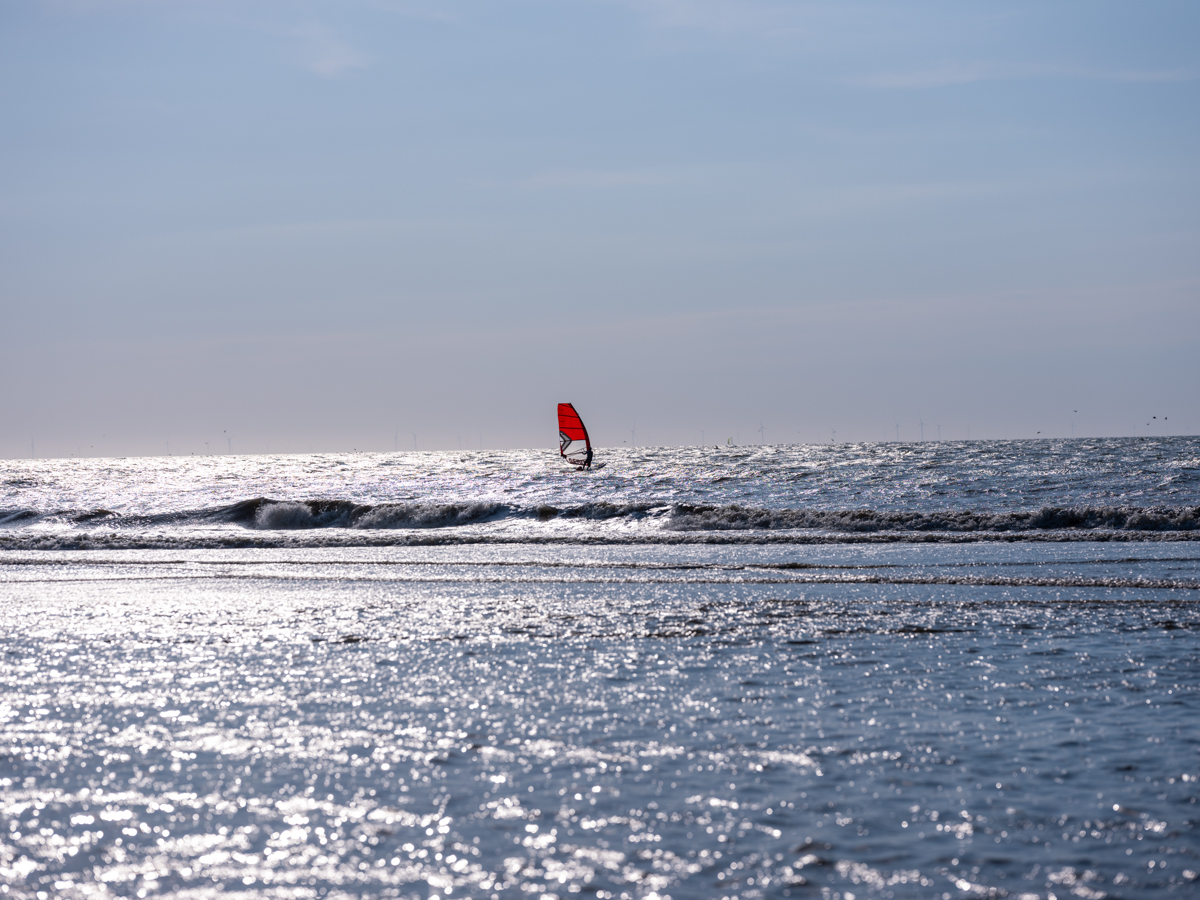
Image: Marjolein Vinkenoog
DESPITE THAT SETBACK, YOU DID EVENTUALLY GET TO SAIL INTO ‘DOWNTOWN LONDON’. ANY MINDBLOWING IMAGES AND STORIES AS A RESULT?
¨Of course, that’s awesome! Sailing under Tower Bridge is truly insane. Isn’t it? Then when you see those images, it does make it iconic. Of course, that was what I knew beforehand, that we absolutely had to capture that image. It doesn’t matter, but we had to have that image, otherwise, it wouldn’t have been complete¨
THEN YOU LOAD UP YOUR SURF TROLLEY AND STRIVE TO DELIVER YOUR PETITION. HOW SHOULD THE PEOPLE PICTURE THAT PROCESS?
¨Well look, I had worked with a whole number of environmental organizations, because we had been preparing since January. Then what you see is, the minister responsible eventually did not dare to attend. So we ended up putting someone else forward. That happened at the last minute because apparently, it was sensitive. But at that very moment, Coca-Cola, for instance, was also present. I had lobbied hard to get them to attend because then they could see that I am not just someone who sits quietly. As a result, I was also invited to visit again in September or October. So we immediately made a follow-up appointment. That’s the result of networking and lobbying. It is quite funny to then stand there in my surf suit, with my five-finger shoes, swimming trunks, and salty hair among all those politicians in neat suits in Westminster. That certainly makes an impression¨
THE FOLLOW-UP APPOINTMENT HAS BEEN SCHEDULED. DID YOU RETURN BACK TO THE NETHERLANDS SATISFIED?
¨Yes, absolutely. We’ve had a lot of coverage on the BBC, even a primetime item. This week I can still be heard on BBC Radio. And we will of course do everything we can to make sure that when I’m back there later in September, or October, we put this story down again. And get that petition signed by the then-responsible minister. So yes, we are happy that it will actually be followed up in this way. After this, we naturally want to take this story further into Europe¨
Read more about ¨The Plastic Soup Surfer¨ here
MORE SEVERNE NEWS
The South West Australia mission
As the 2024 Western Australian windsurfing season comes close to its twilight, Federico Infantino and fellow windsurfers chased up an epic adventure.
With the chances of scoring one final offshore day in WA, and the WSL event being held at the Margaret River main break, little doubts were left in this local crew’s minds. They had to score elsewhere.
Lina Erpenstein wins her first-ever World Cup in Chile
Severne rider rose to the top of the podium in her first-ever World Cup Victory in Chile. The women’s final consisted of no less than three Severne riders; Sol Degrieck who finished second and Pauline Katz who finished fourth.
THE ACTION IS HEATING UP IN CHILE
One of the biggest windsurf wave events in South American history kicked off on April 1st, and will run through to April 12th. The time has come for the PWA-IWT Chile World Cup, and based on the action we saw last year, we can expect to see high-quality windsurfing.
DON’T MISS THIS MASTERCLASS BY DIETER VAN DER EYKEN
After a successful first edition, Dieter van der Eyken, Rene Egli Fuerteventura, and INNSiDE by Melia, are announcing the second edition of the “Windsurfing Masterclass Fuerteventura”.
GIRLS ON TOUR
On Monday, July 10th, 2023, the second edition of ¨Girls on Tour¨ took place in Pozo Izquierdo, Gran Canaria. This esteemed event was a coaching program exclusively organized by the PWA for women, aimed at fostering their skill development.
SPECIAL WINDSURFING DAYS – EL NINO TURNS ON
Tenerife offered several closely spaced wave sailing sessions around the Christmas period in the winter months with some exceptional conditions with the arrival of the first winter swells.
A particular spot, that did not deliver a single day the previous winter, now had Severne rider Dieter Van Der Eyken as excited as a kid on Christmas day.
TOMMY FRIEDL PROCENTER
Experience laid back windsurfing in the red sea Welcome to the Tommy Friedl ProCenter, your destination for windsurfing adventures nestled in Marsa Alam, El Naaba Bay, along the stunning Red Sea in Egypt. At the heart of the action, the centre operates from the...
2024 Margaret River Wave Classic
The 2024 Margaret River Wave Classic was yet another epic event filled with non stop action from the very beginning until the end. Jaeger Stone took the mens open title and Jane Seman won the womens division.
MARGARET RIVER WAVE CLASSIC 2024
The 2024 Margaret River Wave Classic in Western Australia will happen this year from February 1st – 4th
Severne is proud to support this year’s event, and to see World class wave competition return to “margs” yet again.

